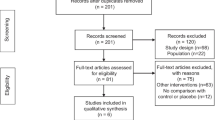Abstract
The literature suggests a possible relationship between carrying angle and nontrauma-related ulnar neuropathy. To confirm that relationship, we asked whether carrying angle is a risk factor in patients with nontrauma-related ulnar neuropathy. We measured the carrying angles of the elbow in 36 patients with a clinically and electrophysiologically confirmed diagnosis of nontraumatic ulnar neuropathy at the elbow and in 50 healthy control subjects. Correlation analysis was performed between carrying angles and parameters of nerve conduction studies, including nerve conduction velocities and amplitudes of muscle and nerve action potentials. The mean carrying angle was greater in the patients than in the control subjects. Females had a greater carrying angle than males. We observed an inverse relationship between carrying angles and motor nerve conduction velocities at cross-elbow segments of the ulnar nerves and with sensory nerve conduction velocities of the distal ulnar nerves. An increased carrying angle of the elbow appears to be an independent risk factor of nontrauma-related ulnar neuropathy.
Level of Evidence: Level III, diagnostic study. See the Guidelines for Authors for a complete description of levels of evidence.

Similar content being viewed by others
References
Abe M, Ishizu T, Shirai H, Okamoto M, Onomura T. Tardy ulnar nerve palsy caused by cubitus varus deformity. J Hand Surg Am. 1995;20:5–9.
American Association of Electrodiagnostic Medicine, Campbell WW. Guidelines in electrodiagnostic medicine: practice parameter for electrodiagnostic studies in ulnar neuropathy at the elbow. Muscle Nerve Suppl. 1999;8:S171–205.
Atkinson WB, Elftman H. The carrying angle of the human arm as a secondary sex character. Anat Rec. 1945;91:49–52.
Balasubramanian P, Madhuri V, Muliyil J. Carrying angle in children: a normative study. J Pediatr Orthop B. 2006;15:37–40.
Beals RK. The normal carrying angle of the elbow: a radiographic study of 422 patients. Clin Orthop Relat Res. 1976;119:194–196.
Beekman R, Van Der Plas JP, Uitdehaag BM, Schellens RL, Visser LH. Clinical, electrodiagnosis, and sonographic studies in ulnar neuropathy at the elbow. Muscle Nerve. 2004;30:202–208.
Cain EL Jr, Dugas JR, Wolf RS, Andrews JR. Elbow injuries in throwing athletes: a current concepts review. Am J Sports Med. 2003;31:621–635.
Chiodo A, Chadd E. Ulnar neuropathy at or distal to the wrist: traumatic versus cumulative stress cases. Arch Phys Med Rehabil. 2007;88:504–512.
Golden DW, Jhee JT, Gilpin SP, Sawyer JR. Elbow range of motion and clinical carrying angle in a healthy pediatric population. J Pediatr Orthop B. 2007;16:144–149.
Habernek H, Ortner F. The influence of anatomic factors in elbow joint dislocation. Clin Orthop Relat Res. 1992;274:226–230.
Hui JH, Torode IP, Chatterjee A. Medial approach for corrective osteotomy of cubitus varus: a cosmetic incision. J Pediatr Orthop. 2004;24:477–481.
Hutchinson MR, Wynn S. Biomechanics and development of the elbow in the young throwing athlete. Clin Sports Med. 2004;23:531–544, viii.
Kanazawa S, Fujioka H, Kanatani T, Tsunoda M, Saura R, Mizuno K. The relation between cubital tunnel syndrome and the elbow alignment. Kobe J Med Sci. 1994;40:155–163.
Khare GN, Goel SC, Saraf SK, Singh G, Mohanty C. New observations on carrying angle. Indian J Med Sci. 1999;53:61–67.
Lo YL, Leoh TH, Xu LQ, Nurjannah S, Dan YF. Short-segment nerve conduction studies in the localization of ulnar neuropathy of the elbow: use of flexor carpi ulnaris recordings. Muscle Nerve. 2005;31:633–636.
Nishimura A, Ogura T, Hase H, Makinodan A, Hojo T, Katsumi Y, Yagi K, Mikami Y, Kubo T. A correlative electrophysiologic study of nerve fiber involvement in carpal tunnel syndrome using current perception thresholds. Clin Neurophysiol. 2004;115:1921–1924.
Norkin C, Levangie P. The elbow complex. In: Norkin C, ed. Joint Structure and Function: A Comprehensive Analysis. 3rd ed. Philadelphia, PA: FA Davis; 2001:226–250.
Ogino T, Minami A, Fukuda K. Tardy ulnar nerve palsy caused by cubitus varus deformity. J Hand Surg Br. 1986;11:352–356.
Oh SJ. Clinical Electromyography Nerve Conduction Studies, 3rd ed. Philadelphia, PA: Lippincott Williams & Wilkins; 2003:44.
Paraskevas G, Papadopoulos A, Papaziogas B, Spanidou S, Argiriadou H, Gigis J. Study of the carrying angle of the human elbow joint in full extension: a morphometric analysis. Surg Radiol Anat. 2004;26:19–23.
Snell RS. Clinical Anatomy, 7th ed. Philadelphia, PA: Lippincott Williams & Wilkins; 2004:551.
Van Roy P, Baeyens JP, Fauvart D, Lanssiers R, Clarijs JP. Arthro-kinematics of the elbow: study of the carrying angle. Ergonomics. 2005;48:1645–1656.
Yilmaz E, Karakurt L, Belhan O, Bulut M, Serin E, Avci M. Variation of carrying angle with age, sex, and special reference to side. Orthopedics. 2005;28:1360–1363.
Acknowledgments
We thank Kai-Fong Chang for assistance with statistical analysis of the data and Martha Tibbet for review of the manuscript.
Author information
Authors and Affiliations
Corresponding author
Additional information
Each author certifies that he or she has no commercial associations (eg, consultancies, stock ownership, equity interest, patent/licensing arrangements, etc) that might pose a conflict of interest in connection with the submitted article.
Each author certifies that his or her institution has approved the human protocol for this investigation, that all investigations were conducted in conformity with ethical principles of research, and that informed consent for participation in the study was obtained.
About this article
Cite this article
Chang, CW., Wang, YC. & Chu, CH. Increased Carrying Angle is a Risk Factor for Nontraumatic Ulnar Neuropathy at the Elbow. Clin Orthop Relat Res 466, 2190–2195 (2008). https://doi.org/10.1007/s11999-008-0308-2
Received:
Accepted:
Published:
Issue Date:
DOI: https://doi.org/10.1007/s11999-008-0308-2




